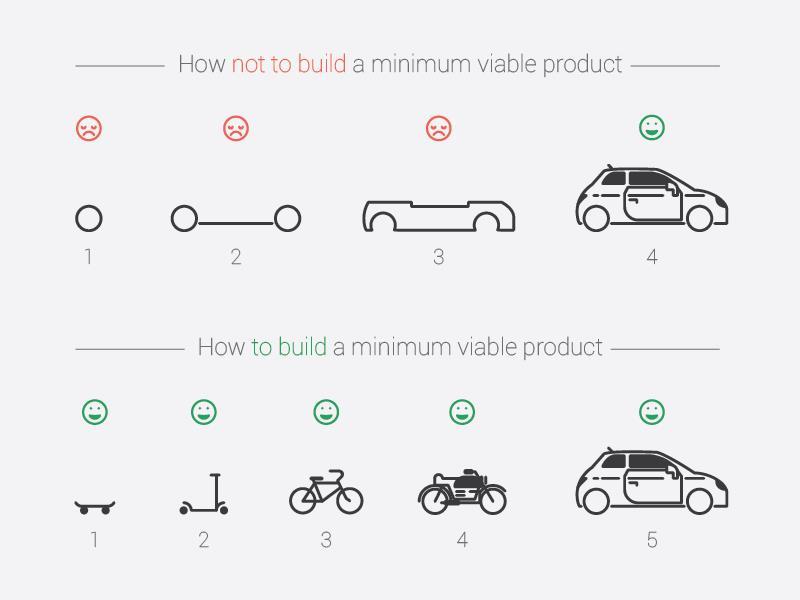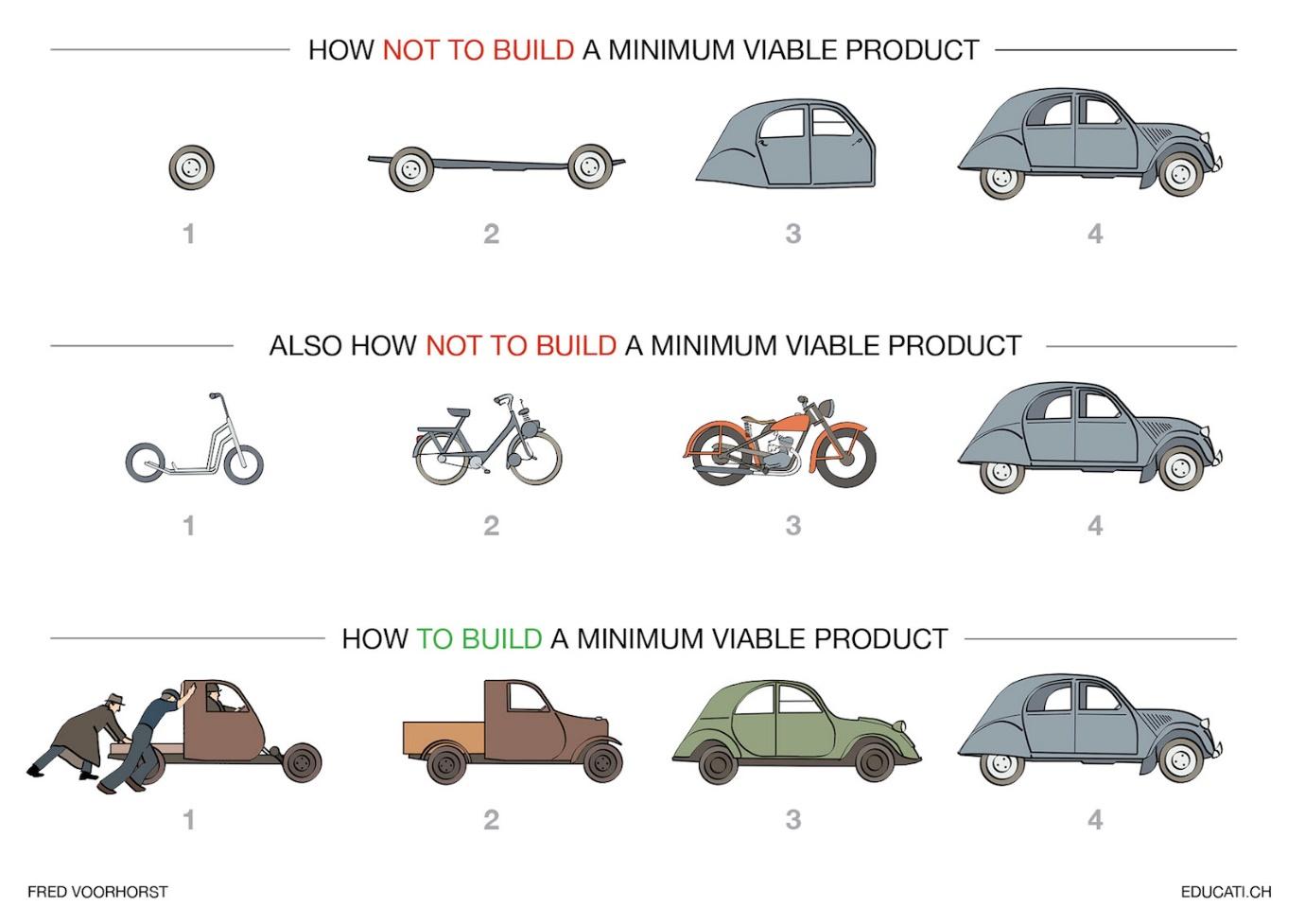
For any non-product related queries, please write to info@perfios.com.
For any non-product related queries, please write to info@perfios.com.

Does this picture sound familiar? I have seen it being used on several occasions to describe an MVP strategy. The picture seems perfect. I myself couldn’t have expressed such an important concept in such a simple but profound way.
What the picture is trying to convey is that agile & incremental development is critical and that during every iteration there is a fully functional and usable product created. This is very important in a super competitive world where time to market is a critical factor. In an effort to create the final product in one go, one may lose significantly to agile competition in capturing the market share.
I also believe that there are some fundamental gaps in the picture. A more critical evaluation would reveal those and here they are.
Disclaimer:- I am not an automobile engineer or a transportation engineer and hence the analysis is more from a layman perspective. I am however trying to use a bit of my knowledge of marketing from my startup experience and business administration degree ?.
The 7Ps of marketing mix are, Product, Price, Place, Promotion, People, Processes and Physical evidence. I will touch upon a few of them that I think will help substantiate my views.
The picture makes it look like what is required by the target user base (we will come to them shortly) is a transportation device. It hence assumes that delivering any product that can take people from one place to another is acceptable during every iteration. An important point missed is that at every stage the product created is totally different from the previous one. The new product is in no way an extension of the previous. Speed, distance and cost of travel are factors that determine the product of interest to a customer. Those being different between the products, it is likely that interested customers would also be different.
Obviously, there’s nothing stated about the price of the product in the picture. These days we can certainly find bikes which are more expensive than some motorcycles and similarly motorcycles which are more expensive than some cars. But, generally we can see that the cost of the product during each iteration is increasing compared to the previous which seems logical with the increased value and richness of the product.
The people here refer to those who are helping build the product. Because the product is changing at every stage, it is likely that the skills and the people required to build also will be different. This puts a considerable burden on the company. The employees who built the previous iteration are not skilled to build the next iteration. They become redundant. The company has to hire new set of people who are likely to take extra time before they can be productive.
I want to cover a more important aspect of people here which is the customer. The product at every stage is different and the intended end user of the product is also different. A skateboard is more of an action sports gadget. A scooter is more of a plaything. A bicycle, motorbike and car can be considered for transport. Because of the variation in prices of the products, the target customer base is also going to be different. Accordingly, the sales pitch (Promotion) will also need to be different.
Each product has a different addressable market and potential or market size.
The assembly line is different as the constituent parts for all the five products are all different. The only thing that seems common between them is wheels. But then, even the wheels are of different sizes and hence not common.
There’s hardly any reuse in terms of component parts, conceptual learning while building the different products, people skills, target customer base and there’s also no repeatability in the sales pitch.
The actual evolution timeline of the products in reality (they are out-of-sync with the first picture in terms of invention timeline) is as below.
It is not just agility that matters there are a few other factors to consider. Is the company testing out a new concept? If yes, then it makes sense to iterate quickly and keep testing in the market till an acceptable version is created. Is the basic survival of the company dependent on the revenues from this product? If yes, then you live life like there’s no tomorrow. Is the customer base ready to take half baked products because they have nothing else and need something/anything very badly? If yes, then again one can keep delivering crap in many forms and mint money.
In conclusion, the diagram is a wrong representation of an important concept. More so by choosing a product set that can easily be dissected and hence exposing to significant scrutiny (pick holes).
All these are just my common-sensical views. While I was looking for the first picture to use for this writeup, my search threw up this picture and the related writeup. This is something I can largely concur with. I think I have done a more elaborate analysis of the gaps in the first picture. I wish to hear your views on any of the communications medium (email, slack, phone) or would be happy to catch up in the cafeteria/break-out area/meeting room during the back-to-office timeline.
Author: Mr. Ramgopal Cillanki, Vice President - Head of Engineering at Perfios Software Solutions Pvt. Ltd.




